November 22, 2008
Chrysler RWD Valve Body Linkage Pivot Wear
Gregg Nader
The TorqueFlite® transmission has been around since mid-to-late 1950s.
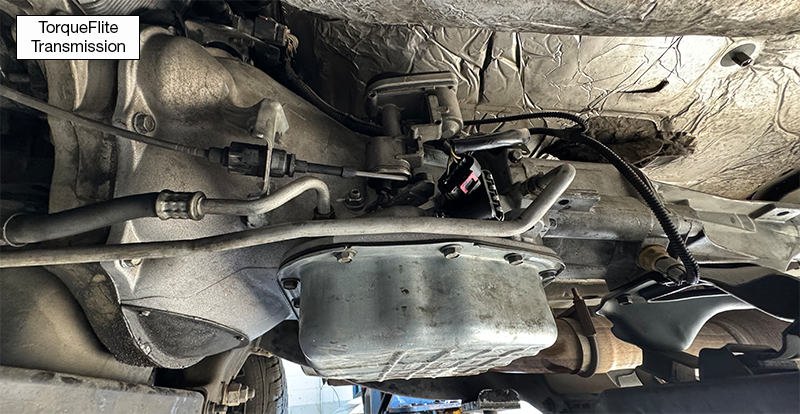 There have been many changes surrounding the manual shaft and rooster comb through the years for these RH-RE-series units. This transmission shaft controls the position of the manual valve that directs oil for the gear ranges, but it also is used for a Reverse light control as well as Park/Neutral safety control. As it evolved, changes to these safety backup switches caused extra stress against the rooster comb that posed new challenges to the technician. Constant switch spring tension now is creating wear that needs to be addressed to help prevent issues such as shifter bind and shifter position detent ball and spring bore wear. Wear in this area became more evident when the name on the Park/Neutral switch changed to what now is called a MUX switch or Neutral safety switch (Figure 1).
There have been many changes surrounding the manual shaft and rooster comb through the years for these RH-RE-series units. This transmission shaft controls the position of the manual valve that directs oil for the gear ranges, but it also is used for a Reverse light control as well as Park/Neutral safety control. As it evolved, changes to these safety backup switches caused extra stress against the rooster comb that posed new challenges to the technician. Constant switch spring tension now is creating wear that needs to be addressed to help prevent issues such as shifter bind and shifter position detent ball and spring bore wear. Wear in this area became more evident when the name on the Park/Neutral switch changed to what now is called a MUX switch or Neutral safety switch (Figure 1).
| Figure 1 – Rooster Comb & MUX Switch |
|---|
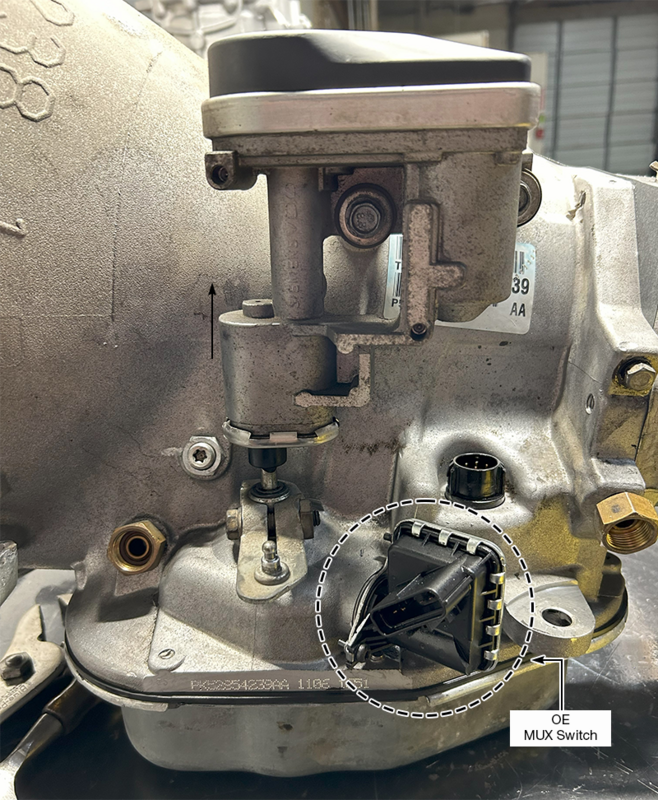 |
If you need to replace this switch, Sonnax offers Neutral safety switch 12410D for ’02-later 46RE, 47RE and 48RE transmissions with a five-terminal switch.
| Sonnax Neutral Safety Switch 12410D |
|---|
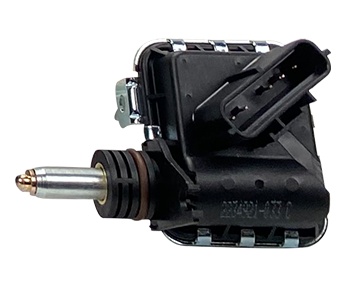 |
This new design switch now also provides signals to the dashboard for shifter position so indicator lights could be added in the dashboard. Lights now show the position of the shifter P-R-N-D/OD-2-1. This new style of switch adds spring tension inside the switch, causing extra stress against the rooster comb and creating new issues:
| Figure 2 – Aggravated Wear at Shift Detent Ball & Spring Pocket |
|---|
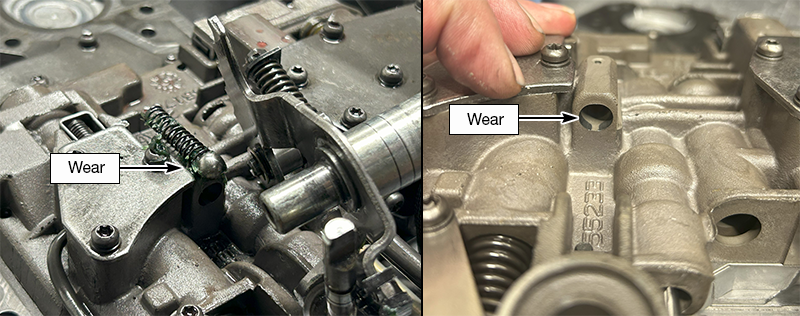 |
| Figure 3 – TTVA Codes |
|---|
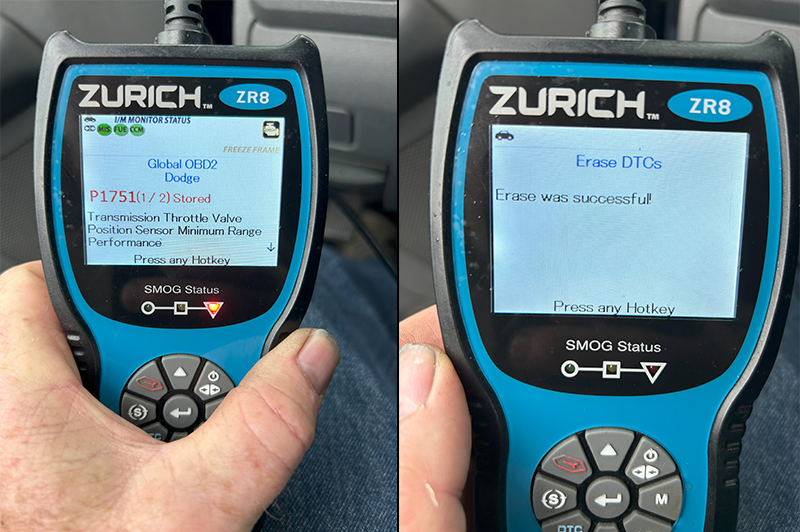 |
Keep in mind, this wear typically starts because the manual shaft is being pushed sideways by the spring force of the switch. Over time (the more that the transmission is shifted through the gears), the shaft causes the transmission case manual shaft bore to wear where the manual shaft seal rides and where it is supposed to be kept centered (Figure 4).
| Figure 4 – Bore & Shift Shaft Wear |
|---|
 |
The case guide hole goes from being a perfect circle to an oval opening. This hole in the transmission case — where the manual shift extends through — is used to keep the manual shaft centered along with a peg extension at the end that extends from the bottom of the manual shaft and fits into the valve body.
When wear happens in the case seal area, one of the first things you’ll notice is the shifter does not want to move freely. It’s most obvious when the shifter sticks in Park. This case wear changes the angle of the shaft, allowing it to rock back and forth in the valve body pocket. This causes the rooster comb, which is a flat plate that’s part of the shaft that controls the locked in positions of the manual valve, to no longer ride true center to the detent ball (spring loaded in a pocket of the valve body) controlling stopping points. When this happens, this detent ball area must be addressed to assure proper position of the manual valve. An aftermarket workaround for the sticking in Park is often the technician filing or grinding on the rooster comb. When properly repaired, both the case shaft hole and the peg that is on the bottom of the shaft are supported in the valve body, allowing the shifting to become stress-free as designed. Addressing the wear area in the case and testing the shaft in the valve body is very simple.
| Figure 5 – Testing Post-Shaft Wear |
|---|
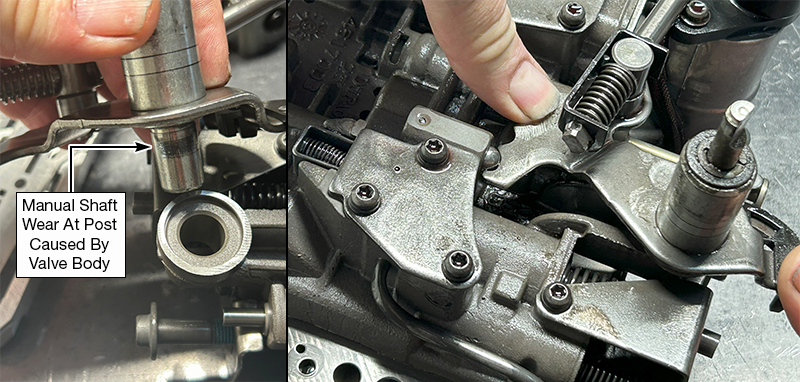 |
It is important to take the time and inspect these areas especially when dealing with codes or binding and make the repair. When wear is in the valve body side or post side of the shift shaft, occasionally you can make a bushing to compensate for the wear. (See article on “Chrysler RWD Valve Body Linkage Pivot Wear” by Gregg Nader.) But more often than not, the fix is simply replacing the shaft. When alignment is as engineered, binds, codes, cable stretching becomes a thing of the past…
Randall Schroeder is a Sonnax technical sales and training specialist. He is a member of the Sonnax TASC Force (Technical Automotive Specialties Committee), a group of recognized industry technical specialists, transmission rebuilders and Sonnax Transmission Company technicians.
November 22, 2008
Gregg Nader
Required
Recommended
Fits ’02-Later with 5-terminal switch
While Sonnax makes every effort to ensure the accuracy of technical articles at time of publication, we assume no liability for inaccuracies or for information which may become outdated or obsolete over time.